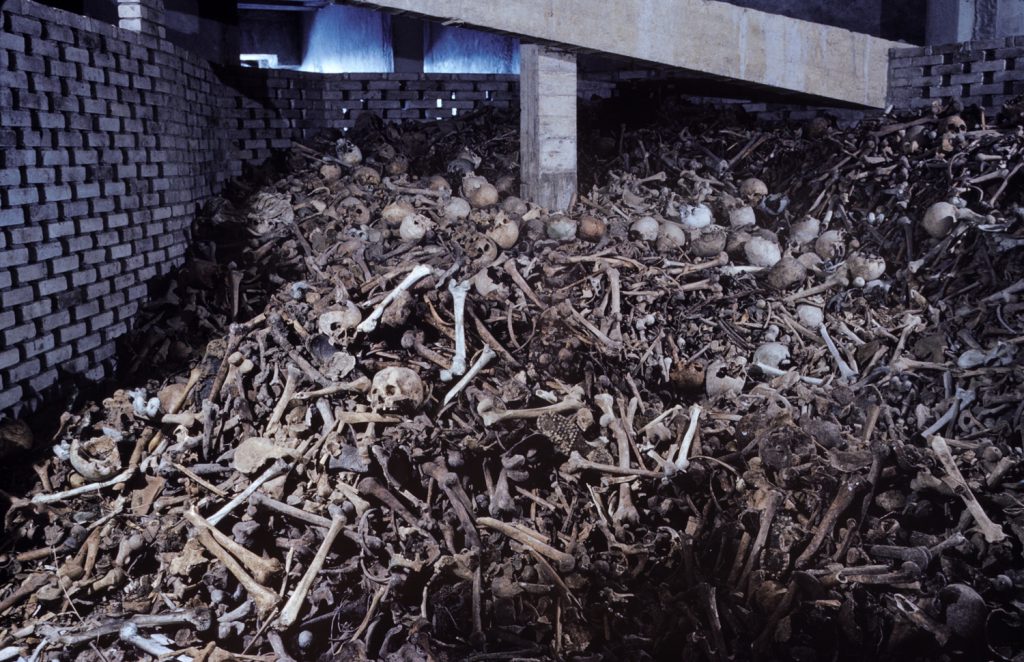Written By: Liz Ronk
In the spring of 1964, LIFE photographer Alfred Eisenstaedt—who served as a German artilleryman during World War I and saw action in the terrible fighting at Passchendaele—and correspondent Ken Gouldthorpe traveled to Verdun, in northeastern France, where one of the costliest battles of WWI took place five decades earlier. Here, LIFE.com presents Eisenstaedt’s quietly powerful color pictures from Verdun: images of an idyllic landscape that still bears the scars, and seemingly harbors the ghosts, of “the war to end all wars.”
Of all the battle sites along the 350-mile sweep of the Western Front [Gouldthorpe wrote in the June 5, 1964, issue of LIFE], none has come to symbolize the carnage and futility of World War I’s fighting more than the fields and hills of Verdun. Here the Germans tried to bleed the French army to death. . . . Today in an ossuary near Douaumont, even now smelling of death, rest the bones of 130,000 unidentified casualties from both sides: skulls, thighs, and — almost indistinguishable — the hobnailed sole of a soldier’s boot. Th erupting shells of a thousand bombardments killed and dug up and mixed and then reinterred the bodies until they intermingled inseparably beneath the mud. [But] not all the memorials honor unknown soldiers. In the wall of Fort Vaux . . . a couple of poppies from nearby fields decorate a plaque [picture #17 in the gallery] to one French victim of Verdun. It says, simply, “To my son. Since your eyes were closed mine have never ceased to cry.”

The sullen turrets of Verdun’s forts continued to guard one the world’s most deadly battlefields.
Alfred Eisenstaedt The LIFE Picture Collection/Shutterstock

Verdun, France, 1964.
Alfred Eisenstaedt The LIFE Picture Collection/Shutterstock

In an ossuary near Douaumont rested the bones of 130,000 unidentified casualties from both sides.
Alfred Eisenstaedt The LIFE Picture Collection/Shutterstock

Verdun, France, 1964.
Alfred Eisenstaedt The LIFE Picture Collection/Shutterstock

Verdun, France, 1964.
Alfred Eisenstaedt The LIFE Picture Collection/Shutterstock

Verdun, France, 1964.
Alfred Eisenstaedt The LIFE Picture Collection/Shutterstock

Verdun, France, 1964.
Alfred Eisenstaedt The LIFE Picture Collection/Shutterstock

Verdun, France, 1964.
Alfred Eisenstaedt The LIFE Picture Collection/Shutterstock

Verdun, France, 1964.
Alfred Eisenstaedt The LIFE Picture Collection/Shutterstock

Verdun, France, 1964.
Alfred Eisenstaedt The LIFE Picture Collection/Shutterstock

Verdun, France, photographed from the air, 1964.
Alfred Eisenstaedt The LIFE Picture Collection/Shutterstock

Verdun, France, 1964.
Alfred Eisenstaedt The LIFE Picture Collection/Shutterstock

Verdun, France, 1964.
Alfred Eisenstaedt The LIFE Picture Collection/Shutterstock

Verdun, France, 1964.
Alfred Eisenstaedt The LIFE Picture Collection/Shutterstock

Verdun, France, 1964.
Alfred Eisenstaedt The LIFE Picture Collection/Shutterstock

14,000 marble crosses honored Americans” at Verdun.
Alfred Eisenstaedt The LIFE Picture Collection/Shutterstock

At Vaux rested a plaque to one soldier.
Alfred Eisenstaedt The LIFE Picture Collection/Shutterstock

This monument was erected in remembrance of refugees.
Alfred Eisenstaedt The LIFE Picture Collection/Shutterstock

Near the crest at Montfaucon, where in 1918 U.S. infantry routed the Germans with bayonets but suffered enormous losses, a village cross held up a shell-shattered Christ.
Alfred Eisenstaedt The LIFE Picture Collection/Shutterstock

At Douaumont a statue of a French soldier lay with 15,000 actual dead.
Alfred Eisenstaedt The LIFE Picture Collection/Shutterstock

Verdun, France, 1964.
Alfred Eisenstaedt The LIFE Picture Collection/Shutterstock

Verdun, France, 1964.
Alfred Eisenstaedt The LIFE Picture Collection/Shutterstock

Verdun, France, 1964.
Alfred Eisenstaedt The LIFE Picture Collection/Shutterstock































